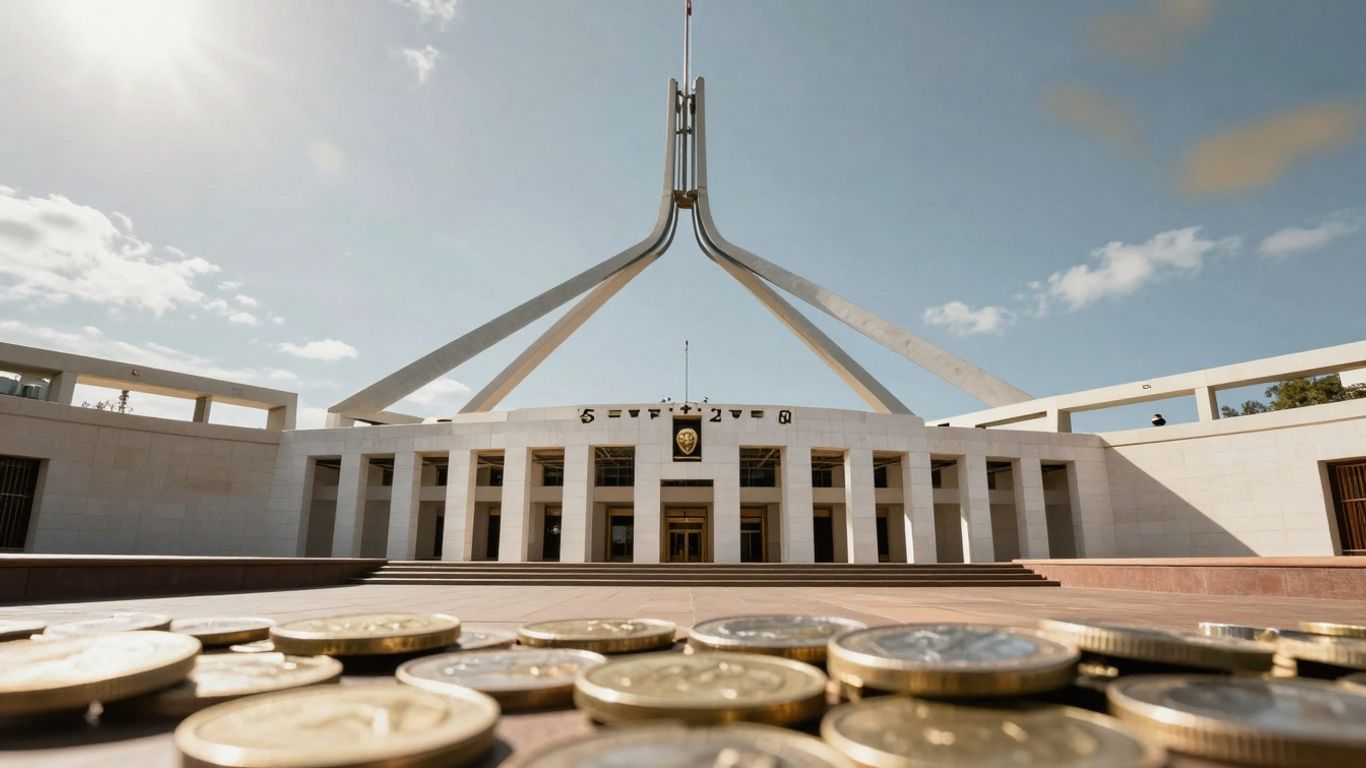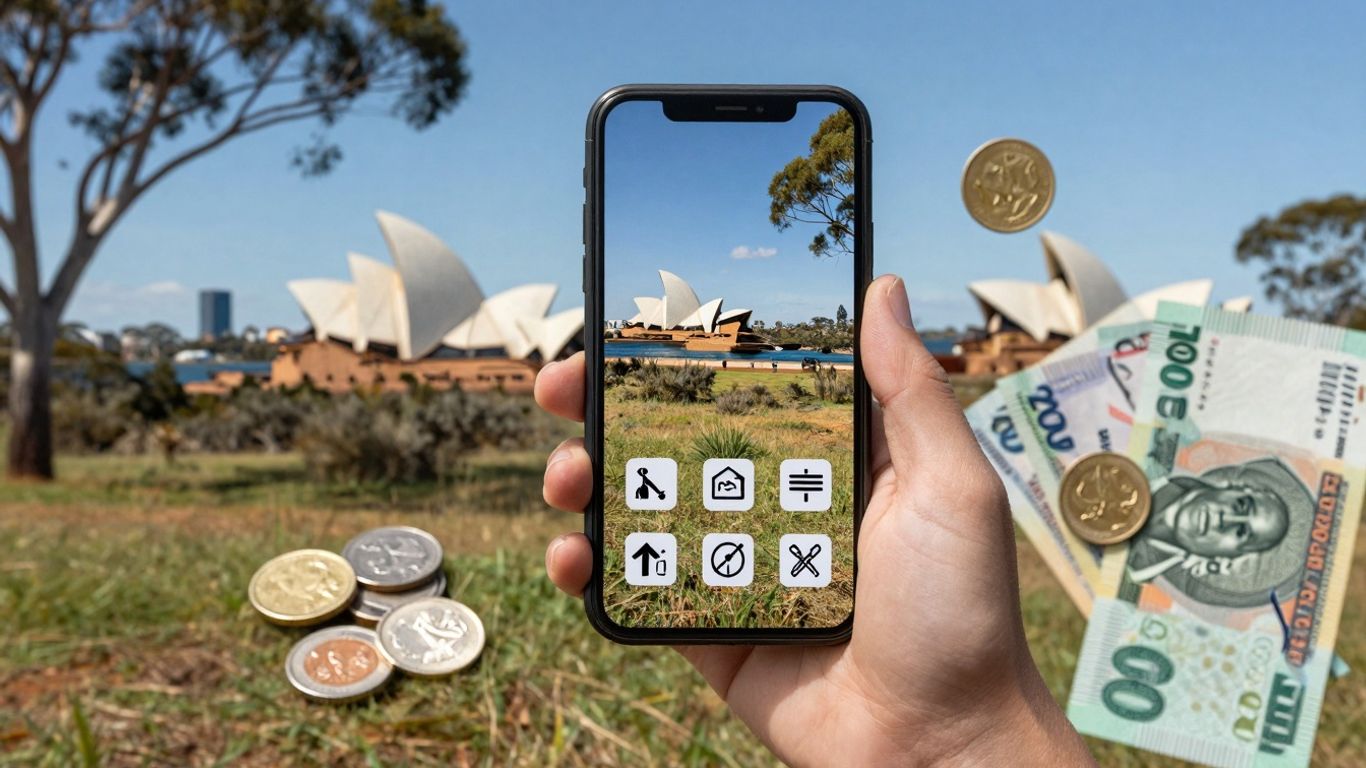G’day, mates! Ever feel like your money just disappears into thin air? You’re not alone. Getting a handle on your cash isn’t always easy, but it’s super important for a bit of peace of mind. This guide, ‘Personal Budgeting 101: Your Aussie Guide to Smarter Spending,’ is all about helping you figure out where your dollars go and how to make them work harder for you. We’ll cover the basics of personal budgeting 101, so you can start building a better financial future, no worries.
Key Takeaways
- Knowing exactly what you earn and what you spend is the first step to good personal budgeting 101.
- Making a budget that fits your life helps you control your money, not the other way around.
- Putting money away for the future, even small amounts, can make a big difference over time.
- Getting rid of debt is a game-changer for your financial freedom.
- Using apps or online tools can make personal budgeting 101 much simpler and easier to stick with.
Understanding Your Income and Expenses for Personal Budgeting 101
Alright, let’s get down to brass tacks. Before you can even think about saving or investing, you need a solid grip on where your money is actually going. It’s like trying to drive somewhere without knowing where you are now – you’ll just end up lost (and probably broke!). This section is all about getting real with your finances, Aussie style.
Tracking Every Dollar: Where Does Your Money Go?
This is the bit most people dread, but trust me, it’s worth it. You need to know exactly where your hard-earned dosh is disappearing to each month. Think of it like a detective case – you’re Sherlock Holmes, and your bank account is the crime scene.
- Use a budgeting app: There are heaps of great ones out there (we’ll cover them later), but even a simple spreadsheet will do.
- Keep receipts: Yeah, it’s a pain, but those little bits of paper hold the key to understanding your spending habits.
- Categorise everything: Groceries, rent, transport, entertainment – break it all down.
It’s easy to underestimate how much you spend on small things, like coffees or snacks. These ‘little’ expenses add up quickly. Tracking your spending helps you identify these areas and make informed decisions about where to cut back.
Distinguishing Needs from Wants: The Aussie Way
Okay, so you know where your money is going. Now, it’s time to figure out if it should be going there. This is where you separate the essentials from the, well, not-so-essentials. Think about it: is that daily latte a need, or a want? Is that new gadget really going to improve your life, or is it just shiny and tempting? This is where you can use a living expenses calculator to get a better idea of your costs.
Here’s a simple way to think about it:
- Needs: Things you have to have to survive and function. Rent/mortgage, groceries, utilities, transport to work, basic clothing.
- Wants: Things that are nice to have, but you could live without. Eating out, entertainment, fancy clothes, the latest tech.
- Savings: Often overlooked, but should be considered a ‘need’ for your future financial security.
Uncovering Hidden Costs: The Sneaky Budget Busters
These are the expenses that creep up on you and sabotage your budget without you even realising it. They’re like those drop bears everyone warns you about – silent, deadly, and lurking in the shadows.
- Subscription services: Gym memberships you never use, streaming services you forget about, that random online course you signed up for and never started.
- Bank fees: Are you paying unnecessary fees for your bank account? Shop around for a better deal.
- Late payment fees: Avoid these like the plague! Set reminders to pay your bills on time.
Identifying and eliminating these hidden costs can free up a surprising amount of cash. Keep an eye out for them, and you’ll be well on your way to a healthier budget.
Crafting Your Budget: Strategies for Australian Households

The 50/30/20 Rule: A Simple Starting Point
The 50/30/20 rule is a super easy way to kickstart your budgeting journey. Basically, you allocate 50% of your after-tax income to needs, 30% to wants, and 20% to savings and debt repayment. It’s not a rigid thing, but a good guide to get you thinking about where your money is going. For example, rent or mortgage payments, groceries, transport, and utilities fall under ‘needs’. ‘Wants’ are things like eating out, entertainment, new clothes, and that fancy coffee you grab every morning. The ‘savings and debt repayment’ portion is for building your emergency fund, paying off credit cards, or saving for a house deposit. It’s a great way to get started, and you can adjust the percentages to suit your own situation. If you’re struggling with debt, you might need to allocate more than 20% to paying it off. If you’re smashing your savings goals, you might be able to splurge a little more on ‘wants’.
Zero-Based Budgeting: Giving Every Dollar a Job
Zero-based budgeting is where you allocate every single dollar of your income to a specific purpose. The idea is that your income minus your expenses equals zero. It forces you to be really mindful about where your money is going. It can be a bit more time-consuming than the 50/30/20 rule, but it can also be really effective for getting a handle on your finances. Here’s how it works:
- Calculate your monthly income after tax.
- List all your expenses, including fixed costs like rent and bills, and variable costs like groceries and entertainment.
- Allocate a specific amount to each expense category.
- If you have any money left over, allocate it to savings or debt repayment.
- Keep track of your spending throughout the month and adjust your budget as needed.
Zero-based budgeting can be really helpful if you’re trying to achieve a specific financial goal, like saving for a deposit on a house or paying off a large debt. It forces you to be really intentional about your spending and can help you identify areas where you can cut back.
Envelope System: A Tangible Approach to Spending Limits
The envelope system is a really old-school but effective way to control your spending, especially on variable expenses like groceries, entertainment, and eating out. You basically allocate a certain amount of cash to each category and put it in an envelope. Once the envelope is empty, you can’t spend any more money in that category until the next month. It’s a great way to visualise your spending and avoid overspending. It’s a bit more hands-on than using budgeting apps or spreadsheets, but some people find it really helpful. Here’s how to set it up:
- Decide which categories you want to use the envelope system for. Common categories include groceries, entertainment, eating out, and clothing.
- Determine how much money you want to allocate to each category each month.
- Withdraw that amount of cash from your bank account.
- Put the cash in separate envelopes labelled with each category.
- When you need to spend money in a particular category, take the cash out of the corresponding envelope. Once the envelope is empty, you can’t spend any more money in that category until the next month.
This table shows an example of how the envelope system might work for a single person:
| Category | Amount |
|---|---|
| Groceries | $400 |
| Entertainment | $200 |
| Eating Out | $150 |
| Clothing | $100 |
| Total | $850 |
If you’re looking for a free spreadsheet to help you manage your budget, there are plenty available online. Just search for "budget spreadsheet Australia" and you’ll find a bunch of options. Remember, the best budgeting strategy is the one that works for you. Experiment with different methods and find one that you can stick to in the long term.
Smart Saving Tactics for Your Financial Future
Saving money can feel like a real slog, especially when you’re just starting out. But trust me, it’s worth it. It’s not just about having a bigger bank balance; it’s about having peace of mind and the freedom to chase your dreams. Let’s look at some practical ways to boost your savings, Aussie style.
Setting Achievable Savings Goals: From Holidays to Home Deposits
First things first: what are you saving for? Vague goals like "saving more" are about as useful as a chocolate teapot. You need to get specific. Do you want a holiday in Bali? A deposit on a house? A new car? Having a clear goal will keep you motivated.
Here’s a simple way to break it down:
- Short-term goals: Think holidays, new gadgets, or paying off smaller debts (under 1 year).
- Medium-term goals: A car, a bigger emergency fund, or maybe some home renovations (1-5 years).
- Long-term goals: A house deposit, early retirement, or your kids’ education (5+ years).
Once you know what you’re saving for, you can work out how much you need and how long it will take to get there. This makes the whole process feel much less overwhelming. For example, if you want to save $5,000 for a holiday in 10 months, you need to save $500 a month. Simple as that!
Automating Your Savings: Set and Forget Success
One of the easiest ways to save money is to automate it. Seriously, this is a game-changer. Set up a direct debit from your everyday account to your savings account, and watch your savings grow without even thinking about it.
Here’s how to do it:
- Choose a savings account: Look for one with a decent interest rate and no fees. High-interest savings accounts are your friend.
- Set up a direct debit: Arrange for a fixed amount to be transferred automatically each payday. Even small amounts add up over time.
- Forget about it: Seriously, don’t even look at your savings account every day. Let it do its thing.
Automating your savings takes the temptation out of spending. It’s like paying yourself first, before you even have a chance to blow your money on takeaway coffees and impulse buys. It’s a simple but incredibly effective strategy.
Emergency Fund Essentials: Your Financial Safety Net
An emergency fund is non-negotiable. It’s your financial safety net, the thing that stops you from going into debt when life throws you a curveball. Think of it as your "oh crap!" fund. Car repairs, unexpected medical bills, job loss – these things happen, and you need to be prepared. Building an emergency fund is crucial.
How much should you aim for? A good rule of thumb is to have 3-6 months’ worth of living expenses saved up. That might sound like a lot, but start small and build it up gradually. Even $1,000 is better than nothing. Here’s a table to illustrate:
| Expense | Monthly Amount | 3 Months | 6 Months |
|---|---|---|---|
| Rent/Mortgage | $2,000 | $6,000 | $12,000 |
| Groceries | $500 | $1,500 | $3,000 |
| Utilities | $300 | $900 | $1,800 |
| Transport | $200 | $600 | $1,200 |
| Other Expenses | $500 | $1,500 | $3,000 |
| Total | $3,500 | $10,500 | $21,000 |
Keep your emergency fund in an easily accessible savings account. This isn’t the place for risky investments. You want to be able to get to it quickly when you need it. Saving money doesn’t have to be a drag. With a bit of planning and some smart strategies, you can build a solid financial future for yourself. Get started today – you won’t regret it!
Managing Debt Effectively: A Key to Financial Freedom

Debt. It’s something most of us Aussies grapple with at some point. Whether it’s a home loan, car loan, or credit card debt, managing it well is absolutely vital for achieving financial freedom. It’s not just about getting out of the red; it’s about building a solid foundation for your future. Let’s break down how to tackle debt head-on.
Understanding Different Types of Debt: Good vs. Bad
Not all debt is created equal. "Good" debt, like a mortgage on a property that’s increasing in value, can actually help build wealth. "Bad" debt, on the other hand, such as high-interest credit card debt, can quickly spiral out of control. Knowing the difference is the first step. Here’s a quick rundown:
- Good Debt: Home loans (mortgages), student loans (potentially, if they lead to higher earning potential), business loans (if used to grow a profitable business).
- Bad Debt: Credit card debt (especially with high interest rates), payday loans, personal loans for non-essential items.
- Neutral Debt: Car loans (depreciating asset), some personal loans (depending on the purpose and interest rate).
Strategies for Debt Reduction: Snowball or Avalanche?
Okay, so you’ve identified your debts. Now what? Two popular strategies for debt reduction are the snowball and avalanche methods. Both involve making minimum payments on all debts while focusing extra payments on one specific debt.
- Snowball Method: Focus on paying off the smallest debt first, regardless of interest rate. The idea is to gain quick wins and stay motivated.
- Avalanche Method: Focus on paying off the debt with the highest interest rate first. This saves you the most money in the long run.
Which one is better? It depends on your personality. If you need quick wins to stay motivated, the snowball method might be for you. If you’re more focused on saving money, the avalanche method is the way to go.
Avoiding New Debt Traps: Smart Credit Card Use
Credit cards can be useful tools, but they can also be a slippery slope into debt. Here’s how to use them smartly:
- Pay your balance in full each month: This avoids interest charges altogether.
- Treat your credit card like a debit card: Only spend what you can afford to pay back immediately.
- Be wary of balance transfers: While they can offer lower interest rates, make sure you understand the terms and conditions.
It’s easy to fall into the trap of using credit cards for everyday expenses, but it’s important to remember that you’re essentially borrowing money. If you can’t pay it back, you’ll end up paying interest, which can quickly add up. Consider setting up automatic payments to avoid late fees and keep your credit score healthy.
Remember, managing debt is a marathon, not a sprint. Stay disciplined, track your progress, and celebrate your wins along the way. You’ve got this, mate!
Leveraging Technology for Seamless Personal Budgeting 101
These days, managing your money doesn’t have to involve scribbling in notebooks or balancing chequebooks (do people even have chequebooks anymore?). Tech’s made it heaps easier to keep track of your dosh and make sure you’re not accidentally blowing your whole paycheque on avo toast and flat whites. Let’s have a look at some ways to use technology to get your budget sorted.
Top Budgeting Apps for Aussies: Your Digital Assistant
There’s a stack of budgeting apps out there, all vying for your attention. Some connect directly to your bank accounts, automatically tracking your spending. Others let you manually input everything, which can be a bit more time-consuming but gives you a better handle on where your money’s actually going. Finding the right app is like finding the perfect pair of thongs – it’s gotta fit just right.
Here are a few popular options:
- Pocketbook: A free app that automatically tracks your spending and helps you set budgets.
- WeMoney: Another popular choice for tracking expenses and setting financial goals. It also offers insights into your spending habits.
- Frollo: This app lets you connect all your accounts in one place and provides personalised insights to help you save.
Online Banking Tools: Making the Most of Your Accounts
Your bank’s website or app probably has more features than you realise. Most banks offer tools to help you track your spending, set savings goals, and even categorise your transactions. It’s worth having a look around to see what’s available. You might be surprised at what you find. For example, you can often set up alerts to notify you when you’re nearing your category budgets or when a large transaction goes through.
Spreadsheets and Templates: DIY Budgeting Power
If you’re a bit of a control freak (no judgement!), or just like doing things the old-fashioned way, spreadsheets can be your best mate. You can create your own budget from scratch or download a template online. There are heaps of free templates available for programmes like Excel and Google Sheets. The beauty of a spreadsheet is that you can customise it to suit your exact needs. Plus, it’s a good way to really understand where your money’s going, because you’re manually entering all the data.
Using a spreadsheet might seem a bit daunting at first, but once you get the hang of it, it’s a powerful tool. You can create charts and graphs to visualise your spending, track your progress over time, and identify areas where you can cut back. It’s all about taking control of your finances and making informed decisions.
Investing for Beginners: Growing Your Wealth Down Under
Okay, so you’ve got your budget sorted, you’re tracking your spending, and maybe even squirrelling away a few extra dollarydoos. What’s next? Investing! It might sound scary, but it’s really just about making your money work harder for you. Think of it as planting a money tree – you put in a little bit now, and hopefully, it grows into something bigger later. Let’s have a look at some basics.
Understanding Basic Investment Concepts: Shares, Property, Super
Right, let’s break down some common investment options. First up, we’ve got shares. These are basically tiny pieces of ownership in a company. When the company does well, your shares go up in value. But, and this is a big but, they can also go down! Then there’s property. Everyone dreams of owning their own home, right? Well, investing in property can also mean buying an investment property to rent out. It can be a good long-term investment, but it also comes with costs like maintenance and dealing with tenants. Finally, there’s superannuation. This is your retirement fund, and it’s probably already being invested for you. You can often choose how your super is invested, so it’s worth having a look at your options. Understanding investment options is key to making informed decisions.
Starting Small: Micro-Investing Platforms
Don’t think you need thousands of dollars to start investing. These days, there are heaps of micro-investing platforms that let you start with just a few bucks. These platforms often let you invest in a range of different things, like shares or exchange-traded funds (ETFs), which are basically baskets of shares. It’s a great way to dip your toes in the water without risking too much. Here’s a few things to consider:
- Research the platform: Make sure it’s reputable and regulated.
- Understand the fees: Some platforms charge fees for trading or managing your account.
- Start small: Don’t put all your eggs in one basket.
Seeking Professional Advice: When to Call in the Experts
Look, investing can be complicated. If you’re feeling overwhelmed, it’s always a good idea to seek professional advice. A financial advisor can help you understand your options, develop an investment strategy, and manage your portfolio. They can also help you with things like tax planning and retirement planning. Just make sure you choose an advisor who is qualified and trustworthy. Getting professional financial advice can save you a lot of headaches down the road.
It’s important to remember that all investments carry some level of risk. There’s no guarantee that you’ll make money, and you could even lose some of your initial investment. That’s why it’s important to do your research, understand the risks, and only invest what you can afford to lose. Investing is a marathon, not a sprint. Be patient, stay informed, and don’t let emotions drive your decisions.
Staying Motivated and Adapting Your Budget
Budgeting isn’t a ‘set and forget’ kinda thing. Life throws curveballs, and your budget needs to be able to dodge ’em. It’s about finding what works for you and sticking with it, even when things get tough. And let’s be honest, they will get tough at some point!
Regular Budget Reviews: Keeping Your Plan on Track
Think of your budget review like a regular service for your car. You wouldn’t drive it for years without checking the oil, would ya? Same goes for your finances. Set aside some time – maybe once a month – to go over your budget.
- Check if you’re sticking to your spending limits.
- See if there are any areas where you can cut back.
- Adjust your budget to reflect any changes in your income or expenses. Did you get a pay rise? Or did your electricity bill suddenly skyrocket?
Regular reviews are key to keeping your budget relevant and effective. It’s also a good time to check your Aussie dollars are being spent wisely.
Celebrating Milestones: Rewarding Your Progress
Budgeting can feel like a drag sometimes, especially when you’re just starting out. That’s why it’s important to celebrate your wins! Did you manage to stick to your budget for a whole month? Did you pay off a chunk of debt? Treat yourself! It doesn’t have to be anything extravagant – a movie night, a nice coffee, or even just a relaxing bath can do the trick.
Here’s a few ideas:
- Small treat: A fancy coffee or a new book.
- Experience: A weekend getaway or a concert.
- Financial reward: Put extra money towards your savings goal.
Adjusting to Life Changes: Flexibility is Key
Life’s unpredictable, right? New job, new baby, unexpected expenses – these things happen. Your budget needs to be flexible enough to handle these changes. Don’t be afraid to tweak your plan as needed. If you lose your job, you’ll need to make some serious cuts. If you get a pay rise, you can put more towards your savings goals. The important thing is to stay adaptable and keep your budget aligned with your current situation.
Remember, your budget is a tool to help you achieve your financial goals. It’s not a rigid set of rules that you have to follow perfectly. Be kind to yourself, and don’t get discouraged if you slip up. Just get back on track and keep moving forward. Budgeting is a marathon, not a sprint!
Wrapping It Up: Your Money, Your Rules
So there you have it, mates. Getting a handle on your money doesn’t have to be a big scary thing. It’s really just about knowing where your cash goes and making a few smart choices along the way. You’ve got the tools now to start sorting out your budget, whether that’s tracking every dollar or just getting a general idea. Give it a go, see what works for you. It might feel a bit clunky at first, but stick with it. Before you know it, you’ll be feeling a lot more chilled about your finances, and that’s a pretty good feeling to have, hey?
Frequently Asked Questions
What’s the big deal with budgeting anyway?
Budgeting is like making a plan for your money. It helps you see where your cash comes from and where it goes, so you can make sure you have enough for what you need and want. It’s super helpful for reaching your money goals, like saving for a holiday or a new car.
Does budgeting mean I can’t ever spend money on fun stuff?
Nah, not at all! Budgeting isn’t about stopping you from having fun. It’s actually about making sure you can enjoy yourself without stressing about money. It helps you find a good balance so you can spend on things you love while still being smart with your cash.
I’m not very good with numbers. Is budgeting too hard for me?
Loads of people find it a bit tricky at the start, and that’s totally normal. Just begin with something simple, like writing down everything you spend for a week. There are also heaps of apps and tools that can make it easier. Don’t worry if it’s not perfect straight away!
How often should I look at my budget?
It’s best to check your budget regularly, maybe once a week or every couple of weeks. That way, you can see if you’re sticking to your plan and make small changes if you need to. Life changes, so your budget might need to change too!
Is budgeting only for people who earn a lot of money?
Absolutely! Budgeting is for everyone, no matter how much money you earn. It’s about making the most of what you’ve got. Even if you don’t have a lot, a budget can help you stretch your dollars further and avoid money worries.
What’s the easiest way to start budgeting without fancy tools?
There are heaps of free apps you can download, or you can even just use a notebook and pen. Some banks also have cool tools in their online banking that can help you track your spending. Pick whatever feels easiest for you!





